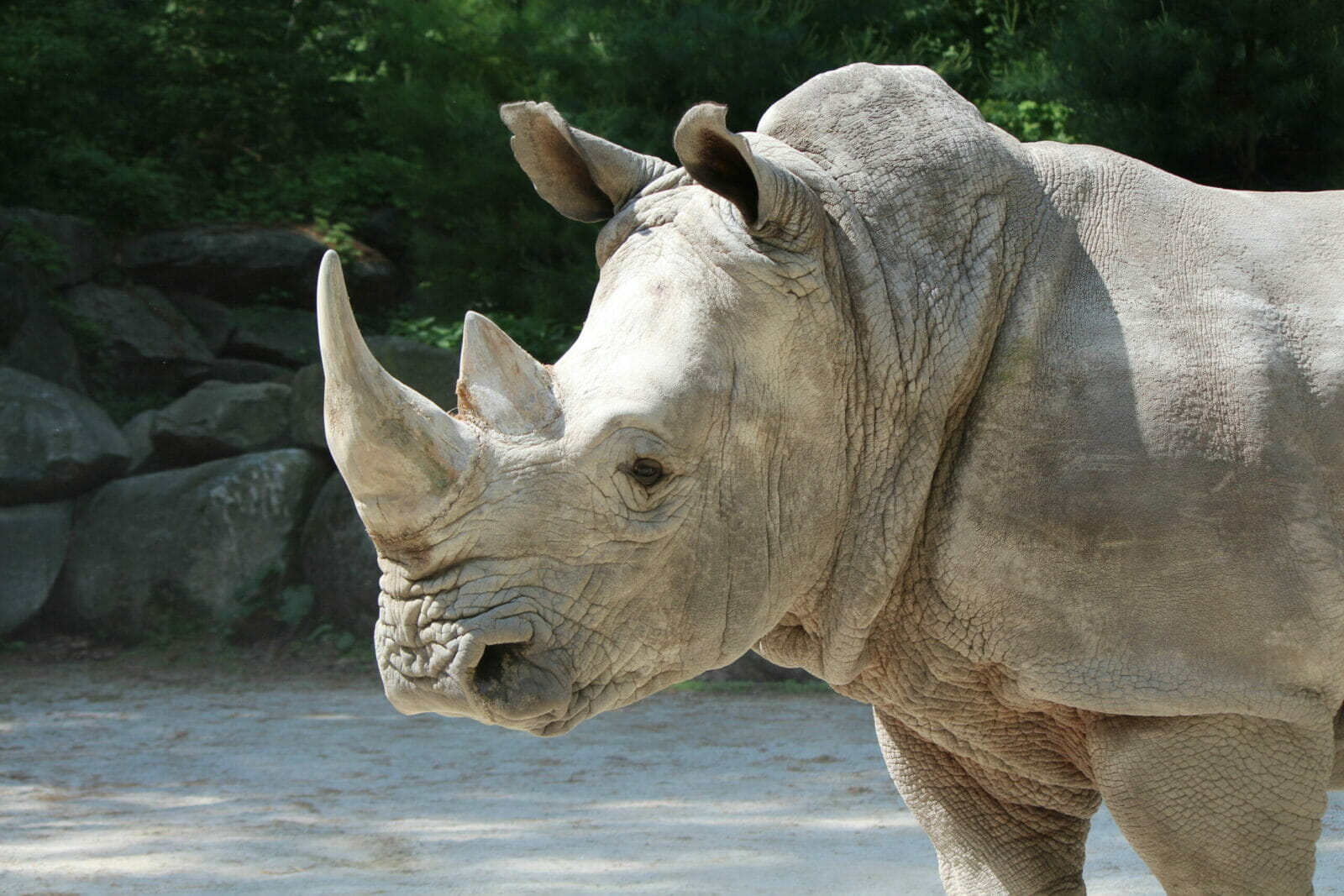
White Rhinoceros
Ceratotherium simumClass: Mammalia Order: Perissodactyla Family: Rhinocerotidae
Size
Length: 11-14 feet
Weight: 3,700 – 6,000 lbs
Lifespan
Lifespan (Wild): 30-35 years
Lifespan (Captivity): Up to 45 years
Diet
White rhinos are grazers and feed on grasses
Habitat & Range
Savanna and grasslands of South Africa
Interesting Facts
- The word rhinoceros comes from the Greek words for “nose horn”.
- White rhinos are the second largest land mammal after the elephant.
- There are two white rhino subspecies: northern and southern. The northern subspecies is close to extinction with very few remaining.
- White rhinos are not actually white in color. One theory is that the “white” in their name comes from the dutch word “wijd”. This translates to “wide” which was used to describe their wide lips.
- White rhinos have two horns. the foremost is longer and can reach 40 inches. Their horns are made of keratin fibers, and unlike cow horns, they do not have a bony core. Human hair and fingernails are also made out of keratin.
- Rhinos have poor eyesight, however, they have a keen sense of smell and hearing.
At the Zoo
Southwick’s Zoo is home to two southern white rhinos, Thelma and Louise. EARTH Limited and Southwick’s offers the opportunity to meet the rhinos up close during rhino encounters.
Conservation Status
Threatened
Threats
Like all rhino species, white rhinos are frequently hunted for their horns. Some cultures believe that rhino horn has medicinal properties. However, there is no scientific evidence that rhino horn, which is made of the same substance as our fingernails, has any health benefits. In addition to poaching, they are threatened by habitat loss.
